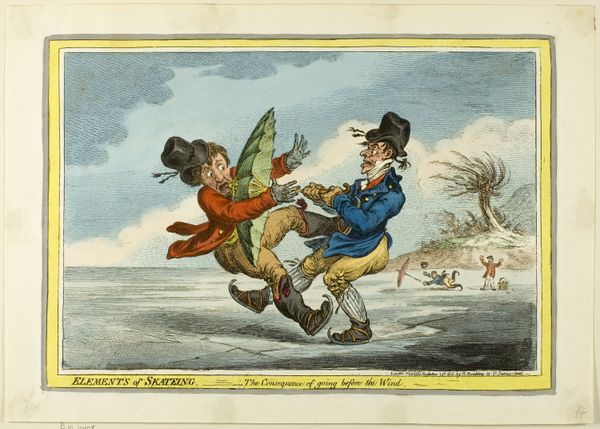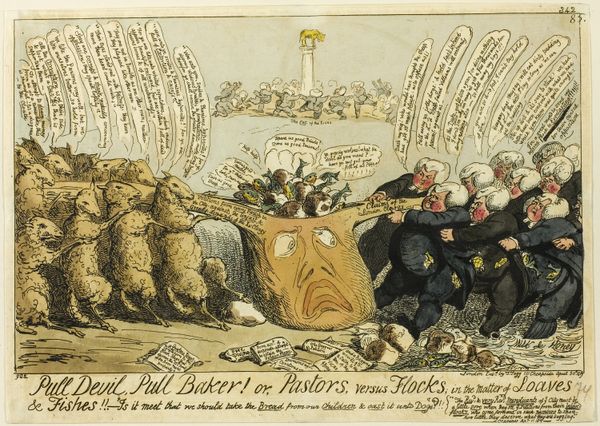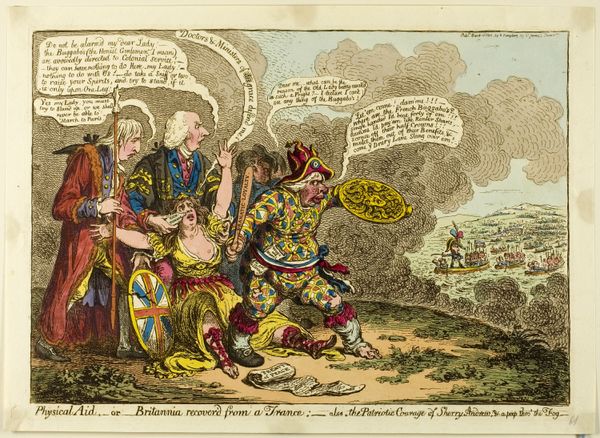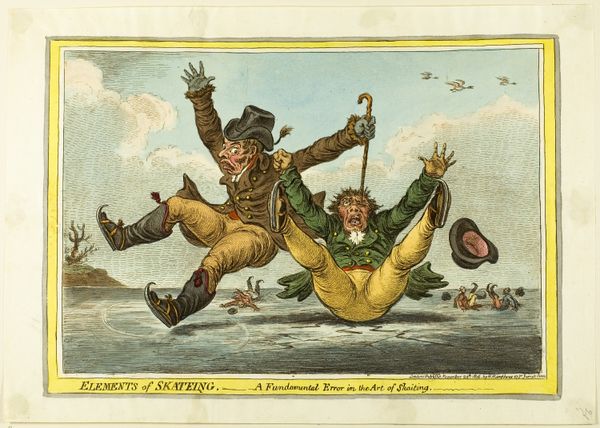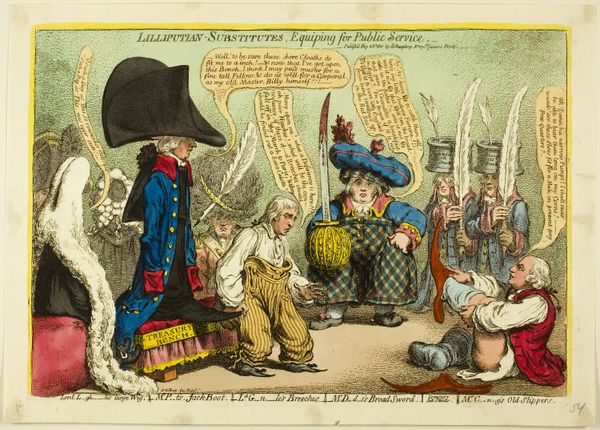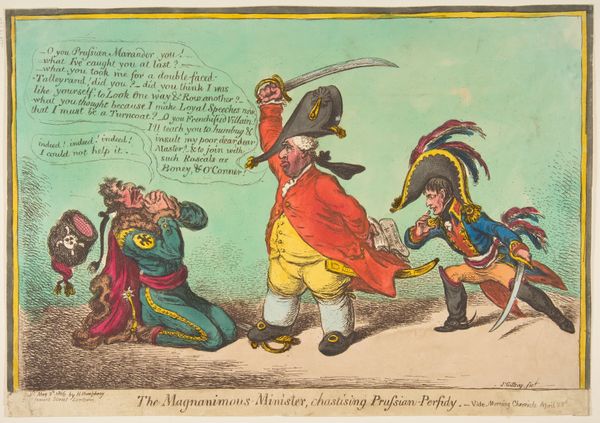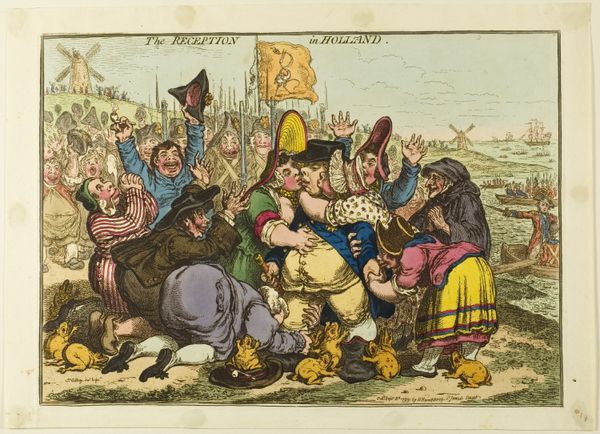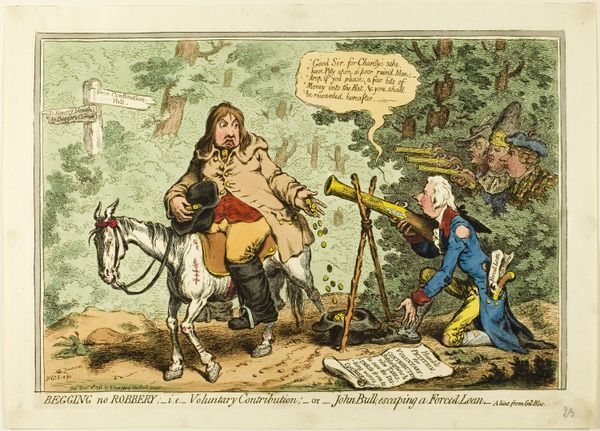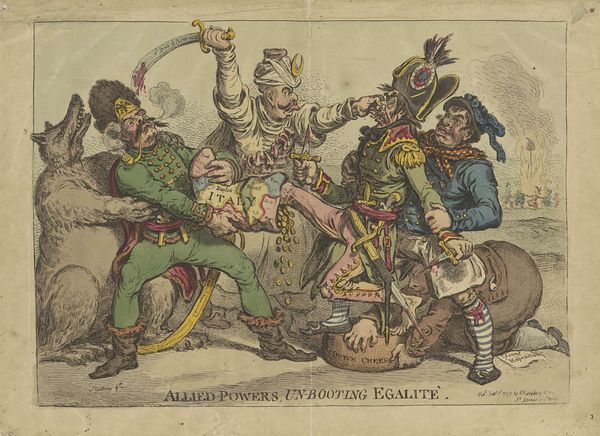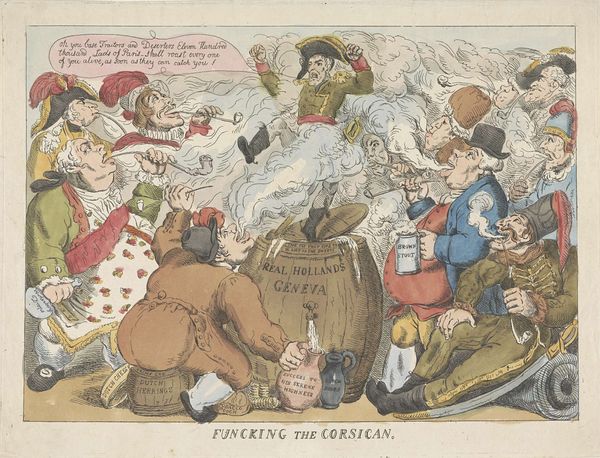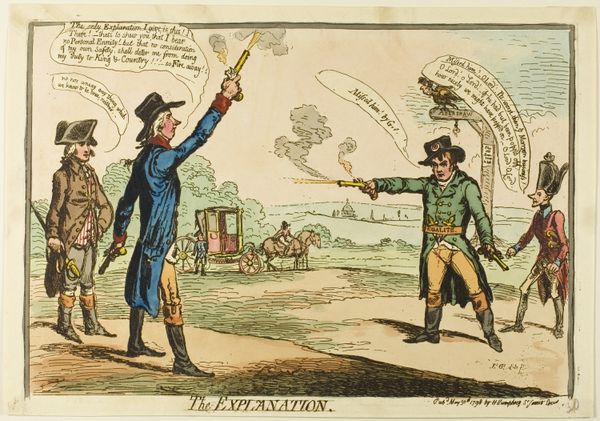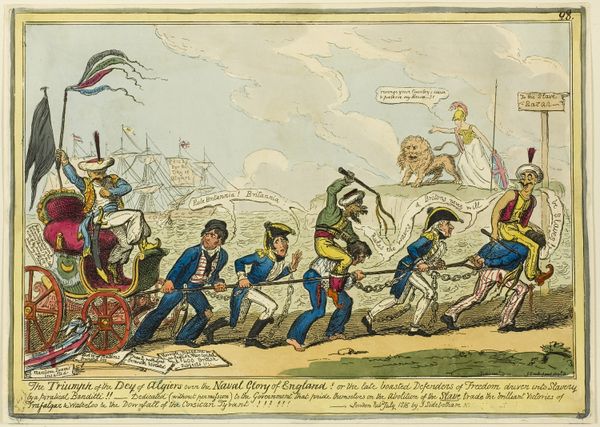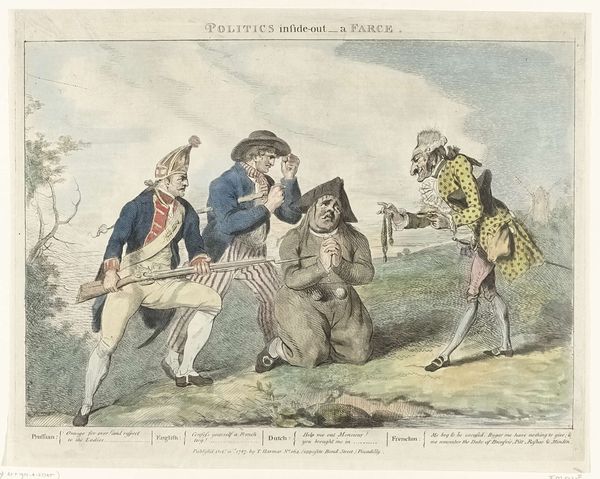
aquatint, drawing, coloured-pencil, print, etching, paper
#
aquatint
#
drawing
#
coloured-pencil
#
narrative-art
# print
#
etching
#
caricature
#
paper
#
coloured pencil
#
england
#
romanticism
#
history-painting
Dimensions: 240 × 343 mm (image); 248 × 350 mm (plate); 264 × 370 mm (sheet)
Copyright: Public Domain
Curator: This print by James Gillray, called "Preliminaries of Peace," dates to around 1801 and uses aquatint, etching, and colored pencil on paper. It seems like quite a scene – what jumps out at you? Editor: It's busy! There's a lot happening. I notice the caricatured figures, especially the large one with his arms raised, and the military figure stepping precariously across a beam. What do you see in this piece? Curator: Gillray’s caricature, especially when considered alongside the work of someone like Hogarth, reveals a fascinating tension. While on the surface this is humorous political commentary on the short-lived Peace of Amiens, we have to consider the work within the context of revolutionary anxieties in England at the time. Note how Gillray deploys visual language and stereotypes to not just satirize but also potentially dehumanize. What’s your take on the central figures' postures? Editor: I see. The large figure on the left seems to represent England, maybe John Bull himself, in a rather unflattering way, celebrating, while the other character – is that supposed to be Napoleon? – looks almost manic as he leaps forward. Is Gillray commenting on the instability of the peace, perhaps? Curator: Exactly! It's worth thinking about how these caricatures play into existing political anxieties. Note, too, how loaded the term "liberty" was in this moment; are these figures marching towards freedom or are they endangering the very foundations of England's own liberty and stability? Consider what symbols are included – for instance, what might Gillray be implying with the precariousness of the ‘Heart of Oak’? Editor: That makes sense. I didn't think about how fraught the idea of 'liberty' was during the Napoleonic Wars. Looking at the smaller figures following, they seem like they are led blindly toward the edge. I now see it less as a celebration of peace, but as a cynical statement about the leaders leading the country toward destruction. Thanks, that was a lot to consider! Curator: And hopefully you now realize that satire is much more complicated and politically charged than simply humor. There are social power structures in play. Keep that in mind!
Comments
No comments
Be the first to comment and join the conversation on the ultimate creative platform.
